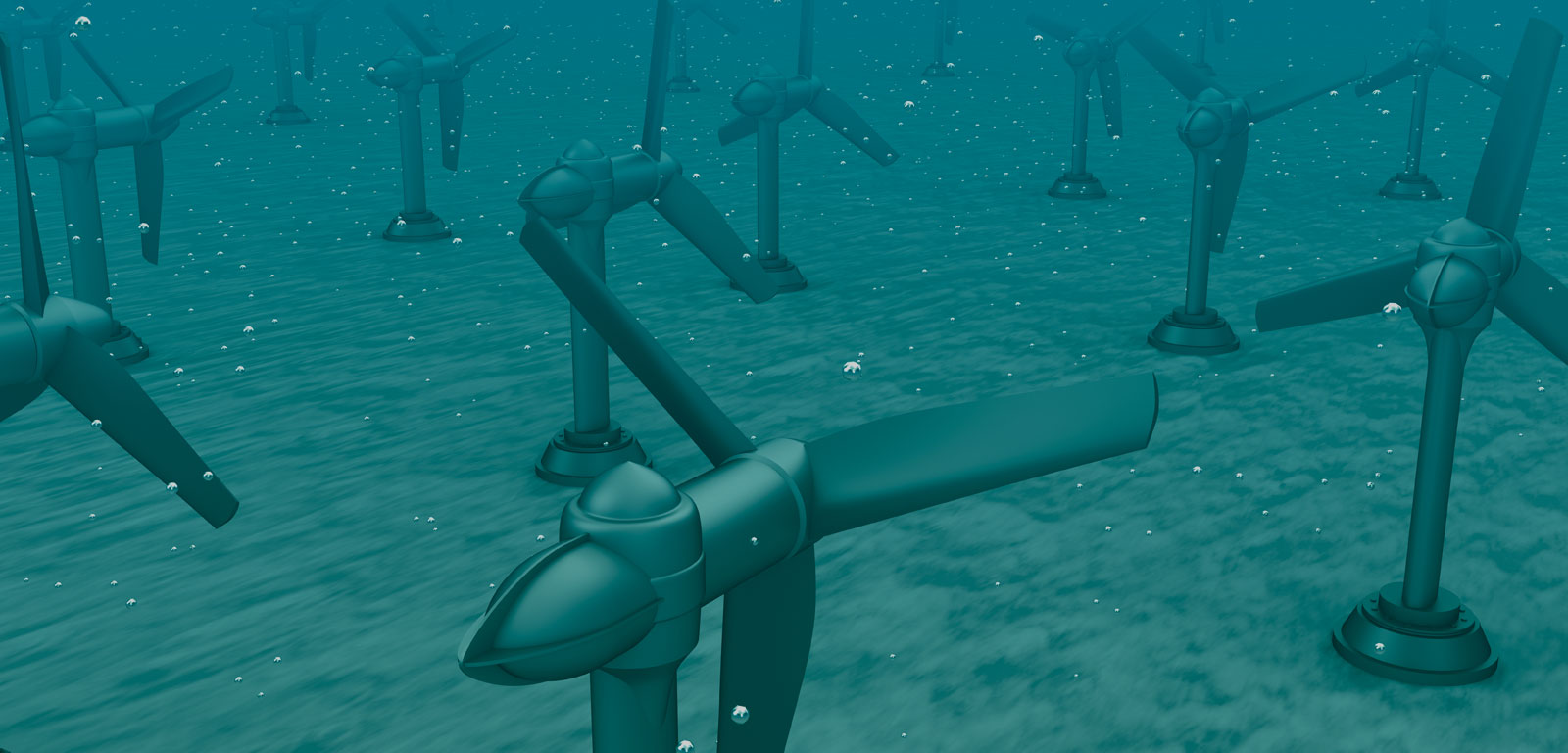Subject
Theoretical and numerical aspects in fluid dynamics and turbulent flow
General details of the subject
- Mode
- Face-to-face degree course
- Language
- English
Description and contextualization of the subject
This course is devoted to the modeling of equations of fluid dynamics in the presence of turbulence, vortices and stochastic flows. The knowledge about these dynamics is essential for the design of durable mechanisms that optimize the capture of energy from either wind or sea forces. Some nonlinear PDE which are susceptible of being studied analytically and numerically are relevant within this context. Moreover, the stochastic Burgers and Navier-Stokes equations are useful in the presence of nondeterministic forces.The objective of the course is to provide students with a mathematical description of the emergence and propagation of some types of singularities in fluid dynamics. We show the equations modeling these phenomena and we analyze some particular solutions of special interest. Due to the limitations of analytical methods for solving nonlinear partial differential equations and stochastic differential equations that appear in this framework, some sophisticated numerical schemes are proposed. Students will focus on the programming of numerical methods to make an efficient use of them.
Teaching staff
| Name | Institution | Category | Doctor | Teaching profile | Area | |
|---|---|---|---|---|---|---|
| DE LA HOZ MENDEZ, FRANCISCO | University of the Basque Country | Profesorado Agregado | Doctor | Bilingual | Applied Mathematics | francisco.delahoz@ehu.eus |
| GORRIA CORRES, CARLOS | University of the Basque Country | Profesorado Agregado | Doctor | Bilingual | Applied Mathematics | carlos.gorria@ehu.eus |
| VEGA GONZALEZ, LUIS | University of the Basque Country | Profesorado Catedratico De Universidad | Doctor | Not bilingual | Mathematical Analysis | luis.vega@ehu.eus |
Competencies
| Name | Weight |
|---|---|
| Learning about the partial differential equations of fluid dynamics, the physical laws that lead into these equations and the assumptions taken in the formulation | 25.0 % |
| Knowing the mathematical concepts of vortex filaments, sheets and patches and visualizing the evolution of these types of solutions | 25.0 % |
| Understanding the concept of stochastic forces in fluids and introducing its effect into the equations | 25.0 % |
| Being able to program nontrivial numerical schemes to solve partial differential equations with singularities and stochastic differential equations | 25.0 % |
Study types
| Type | Face-to-face hours | Non face-to-face hours | Total hours |
|---|---|---|---|
| Lecture-based | 18 | 33 | 51 |
| Applied classroom-based groups | 4 | 0 | 4 |
| Applied computer-based groups | 8 | 12 | 20 |
Training activities
| Name | Hours | Percentage of classroom teaching |
|---|---|---|
| Application Workshops | 12.0 | 0 % |
| Classroom/Seminar/Workshop | 4.0 | 100 % |
| Computer practicals | 15.0 | 100 % |
| Exercises | 33.0 | 0 % |
| Expositive classes | 18.0 | 100 % |
| Individual study | 15.0 | 0 % |
| Systematised study | 30.0 | 0 % |
| Theory | 15.0 | 100 % |
| Working with it equipment | 8.0 | 100 % |
Assessment systems
| Name | Minimum weighting | Maximum weighting |
|---|---|---|
| Drawing up reports and presentations | 40.0 % | 60.0 % |
| Practical tasks | 40.0 % | 60.0 % |
Learning outcomes of the subject
Recognize the phenomena and the causes that produce turbulent effects on fluids and know how to model their dynamics.Assimilate a scientific programming language with the aim of calculating the approximation to the solution of equations used in fluid dynamics and running numerical simulations in different scenarios.
Interpret by means of data tables and graphical outputs the temporal evolution of mathematically modeled turbulent phenomena, distinguishing the values of the parameters and the environmental conditions that lead to controlled behaviors or unstable behaviors.
Ordinary call: orientations and renunciation
The student's grade in the subject will be determined by means of the review and assessment of the evaluation tasks proposed throughout the course. The modality of the evaluable tasks consists of:- the resolution of exercises,
- the development of computer code that solves the problems raised,
- a written report consisting of the description, analysis and conclusions obtained in the resolution of the exercises and in the programming of the computer code and its implementation to solve the proposed cases.
The assessable tasks must be submited to the corresponding link of the egela/moodle platform within the announced deadline.
Extraordinary call: orientations and renunciation
The criteria for obtaining the grade in the extra exam session will be the same as in the regular call.Temary
Lesson 1. Basic notions of turbulent flowsFrom the Euler equations and by taking some assumptions, the formulation can be transformed into some nonlinear PDE suitable for being studied analytically and numerically.
Lesson 2. Vortex filaments, sheets and patches
The analysis of the self-similar solutions of the PDE involved in fluid dynamics and the numerical simulations help to understand the origin and evolution of singularities.
Lesson 3. Burgers and Stokes equations under stochastic forces
In the presence of nondeterministic forces the model turns to the stochastic Burgers and Navier-Stokes equations. Design of implicit numerical methods for approximate solutions.
Bibliography
Compulsory materials
Theoretical notes, practical examples and computer code which can be found in egela/moodle platform for online teaching, https://egela.ehu.eusBasic bibliography
Uriel Frisch, Turbulence, the Legacy of A. N. Kolmogorov, Cambridge University Press, 1995.Andrew J. Majda, Andrea L. Bertozzi, Vorticity and incompressible flow, Cambridge University Press, 2002.
Philip G. Saffman, Vortex dynamics, Cambridge University Press, 1992.
Alexandre J. Chorin, Vorticity and Turbulence, Springer, 1994.
Hiroshi Kunita, Stochastic Flows and Stochastic Differential Equations, Cambridge University Press, 1990.
Peter E. Kloeden, Eckhard Platen, Numerical Solution of Stochastic Differential Equations, Springer, 1992.
Vishik, M.J., Fursikov, A.V., Mathematical Problems of Statistical Hydromechanics, Kluwer Academic Publishers, Dordrecht, 1988


